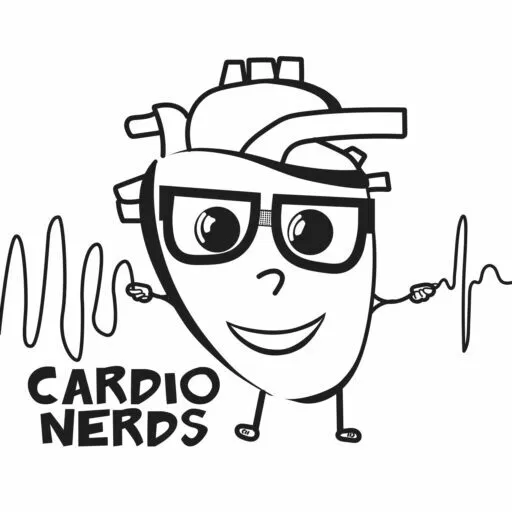“Harriette Van Spall: I'm Harriette Van Spall, Associate Professor of Medicine at McMaster University, and I'm so honoured to have with me today Professor Mike Gibson, Professor of Medicine from Harvard Medical School, who is the Principal Investigator of the AEGIS-II trial. He's here at ACC 2024 to present the trial results at the late-breaking clinical trial session. Welcome, Mike. It's so nice to see you.
C. Michael Gibson: Thanks for having me on today.
Harriette Van Spall: Before we start discussing the trial, I wonder if you would tell us about apolipoprotein A-1 and the rationale for the hypothesis that you tested with the AEGIS-II trial.
C. Michael Gibson: Well, this has been a 20-year odyssey. CSL was getting rid of this ApoA-1 in all the blood they were collecting to make blood products. Twenty years ago, they approached us to see if this substance could help people. ApoA-1 is the building block of good cholesterol, or HDL. We know that people with low ApoA-1 levels and poor cholesterol efflux—the capacity to remove fat from macrophages—have worse outcomes. This is true both in outpatient settings and critically after a heart attack. Those with the poorest efflux had the worst survival rates. So, we hypothesised that if we had a drug to improve efflux, and we do—human ApoA-1 modified slightly to stabilise it—we could potentially improve outcomes by infusing this after a heart attack.
Harriette Van Spall: Sure. Tell us about your trial design. This was a phase III, multicenter, double-blinded, placebo-controlled, event-driven trial. Can you elaborate on the protocol?
C. Michael Gibson: Participants had to have had an MI, which included both STEMI and non-STEMI—about half had STEMI, half had non-STEMI. After their cath, they received either the drug or a placebo, ensuring the dye had cleared. They received four infusions of human ApoA-1 or placebo, spaced a week apart. The placebo was made to match the drug’s appearance. Participants also needed risk factors like multivessel disease and either drug-treated diabetes, advanced age, or peripheral arterial disease. These were high-risk patients, followed up with a primary endpoint at 90 days—cardiovascular death, MI, stroke—and secondary endpoints at 180 and 365 days.
Harriette Van Spall: What informed the regimen of four weekly infusions, and how were these delivered from a healthcare process point of view?
C. Michael Gibson: We based the regimen on previous studies, particularly AEGIS-I, which found the highest dose was most effective for cholesterol efflux. We also noted the biggest divergence in outcomes post-MI was within the first 30 days. The infusions were designed to coincide with this period. Infusions were delivered in various settings, ideally before hospital discharge, including cath lab holding areas, hospitals, or ambulatory centers.
Harriette Van Spall: This was a large trial. Tell us about the sample size and baseline characteristics of the groups.
C. Michael Gibson: The sample size was 18,200. We needed such a large sample because event rates for MI are decreasing. Initially, we required two risk factors, but later increased to three due to lower-than-expected event rates. We needed around 900 to 1,000 events to achieve 90% power for detecting a 20% difference between treatments. Demographically, about 25% were women, mostly in their sixties, with half having STEMI and the other half non-STEMI. Two-thirds had diabetes.
Harriette Van Spall: Any co-interventions? What medical therapies did the groups receive?
C. Michael Gibson: Approximately 92% of patients underwent PCI, with 8% receiving medical therapy. We aimed to enrich the medical therapy group to assess higher risk. We did not restrict complete revascularization—sites could treat all vessels as needed. The primary endpoint was cardiovascular death, MI, or stroke. We didn’t achieve statistical significance at 90 days, and the p-value at 180 days was 0.076, showing a trend but not significance.
Harriette Van Spall: What was your primary endpoint and event rate?
C. Michael Gibson: The primary endpoint was cardiovascular death, MI, or stroke. We didn't achieve statistical significance at 90 days. At 180 days, it was close but not significant, and similarly at 365 days. Secondary endpoints showed a significant reduction in MI at 180 days but not at 90 days, with a strong trend out to a year. No difference in stroke was observed. Exploratory analyses showed greater benefits in patients with hyperlipidemia—those with higher baseline LDL had better outcomes.
Harriette Van Spall: If you had to execute this trial a second time, what would you change?
C. Michael Gibson: We learned that patients with LDL below 100 probably don't benefit as much. Future trials should focus on hyperlipidemic patients on statins. Also, the benefit emerged later than expected, suggesting a later primary endpoint like 180 days would be better. This was the first trial of its kind, so we took our best shot.
Harriette Van Spall: We should touch upon the safety findings. Would you tell us about those?
C. Michael Gibson: There was a slight excess of hypersensitivity reactions in the ApoA-1 group—four events versus 14. Conversely, there was a significant reduction in AKI with the infusion. Hypersensitivity was expected with human biologics, but overall, the drug was well tolerated.
Harriette Van Spall: A well-designed trial that established small risk reductions with CSL 112 in patients with acute MI and multivessel disease, a well-tolerated drug, and consistent reductions across many secondary endpoints, suggesting potential benefits with longer follow-up or in certain subgroups. Thank you so much, Mike Gibson, for being here. Congratulations to you and the team for this impactful trial.
C. Michael Gibson: Great. Thanks for having me today.”








Comments